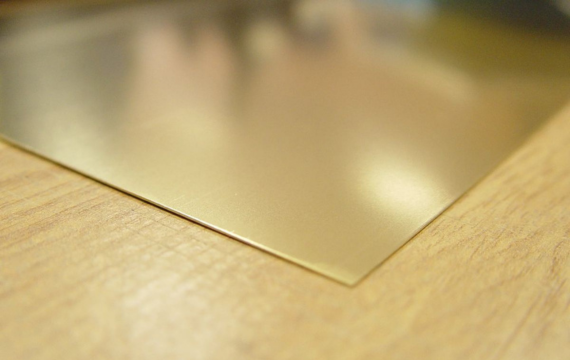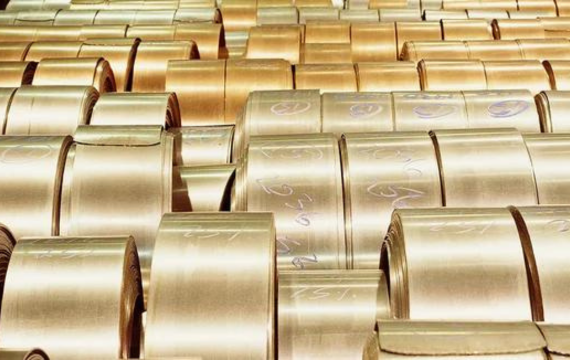In this article, we will explore critical factors on density of brass. Furthermore, we will also compare density of metals to brass.
With this information, it will be easier for you to decide whether you can use brass for your application or not.
Let’s dive right in:
What is the Average Density of Brass in g/cm3?
The average densities of brass average around 8.4 to 8.7 grams per cubic centimeter (g/cm³). Brass being an alloy of copper and zinc, the density varies with the type and proportion of the metals utilized.
If brass is used for plumbing, musical and hardware accessories, then density determines strength, durability, and ability to resist corrosion or rusting.
It is crucial to understand the density of brass so as to evaluate how suitable the material is in a light weight structure or design. Understanding the density allows you to make informed decisions in engineering and manufacturing, ensuring optimal performance and reliability in your projects.

Comparing Density of Brass to Other Popular Metals
Now, let’s compare the density of brass to some of the most popular metals:
| Metals | Density (g/cm³) |
| Brass density | 8.4 – 8.7 |
| Aluminum | 2.7 |
| Copper | 8.96 |
| Zinc | 7.14 |
| Bronze | 8.8-9.0 |
| Steel | 7.8-8.1 |
| Lithium | 0.534 |
| Beryllium | 1.85 |
| Sodium | 0.97 |
| Magnesium | 1.74 |
| Potassium | 0.86 |
| Calcium | 1.54 |
| Scandium | 2.99 |
| Titanium | 4.5 |
| Vanadium | 6.11 |
| Chromium | 7.19 |
| Manganese | 7.47 |
| Iron | 7.87 |
| Cobalt | 8.9 |
| Nickel | 8.9 |
| Molybdenum | 10.28 |
| Silver | 10.49 |
| Tin | 7.31 |
| Neodymium | 7.01 |
| Ytterbium | 6.9 |
| Tungsten | 19.25 |
| Gold | 19.32 |
| Mercury | 13.53 |
| Lead | 11.34 |

Density of Brass Alloys
Brass alloys are popular in many applications today. Unlike the pure brass, the density of brass alloys vary depending on alloying elements. Let’s explore some popular options:
| Brass Alloy | Density in g/cm³ |
| Red brass density | 8.75 |
| Yellow brass density | 8.47 |
| Naval brass density | 8.44 |
| Brass C3604 density | 8.5 |
| 260 brass density | 8.53 |
| Cartridge brass density | 8.53 |
| Muntz metal density | 8.45 |
| Admiralty brass density | 8.53 |
| Lead-free brass density | 8.4 |
Factors Influencing Density of Brass
· Composition
The principal way through which you influence brass density is by the variation in concentrations of copper and zinc. Brass commonly contains about 60 to 70 % copper and 30 to 40 % zinc. However, when other elements like tin, lead, or aluminum are included in the chemical construction, the density becomes altered.
For instance, the density can be increased by adding more copper, while the density can be decreased by adding more zinc or lighter metals. The density of brass depends on the type of brass, say naval or leaded brass; the two may not have the same density. This in turn makes it possible to control the density of brass to fit certain industrial or mechanical.
· Impurities
Different types of impurities that may be present during the process of making brass affect the density of the end result. Any foreign materials getting into the manufacturing process, such as oxygen, sulfur, or silicon, may alter the density and uniformity of the alloy.
These impurities can result in porosities, cracks, or the presence of foreign matter within the material, leading to variation of porosity in the material.
In order to provide consistency and the required density of the alloy, it is necessary to reduce impurities. As for the quality of the material, a lesser amount of impurities in the higher-quality brass will mean a less variable density throughout the metal.
· Temperature
It will also be seen how temperature greatly influences the density of brass. When brass gets hot, it increases in volume, causing the density to decrease for the same mass of the material in a larger volume. With brass, when it cools, it shrinks, and there is an increase in density as the molecules in the material are packed closer.
In case you have been using brass in places where high heat is involved, this thermal expansion is very important. For detailed and accurate applications, operating density should be modified by temperature parameters. High heat may also cause phase changes within the material, which will affect the microstructure of the material and therefore affect the density.
· Microstructure
Density of brass is controlled by modifying its microstructures, which include grain size and phases of the material. During the manufacturing of brass, the microstructure of the material develops at the time of solidification and influences the density of the material. Usually, the samples with finer grains possess a higher density as they contain a minimal number of voids and internal spaces.
At the same time, in large grains, one can create defects that adversely affect the density in general. The cooling rate and the composition of the alloy must be controlled during the process in order to obtain the required microstructure. It is important to know that in improving the grain structure, the density is enhanced.
· Manufacturing Process
This is an indication that the type of process that you employ on the brass has a direct impact on its density. For instance, casting leads to the creation of small air pockets or voids, and thus the density of the brass is affected.
On the other hand, forging or rolling press the material together, thereby eradicating these gaps and enhancing compactness. Methods such as extrusion and drawing can also improve the density of the material by closing the grains or eliminating defects.
When manufacturing, the cooling rate, mechanical treatment, and the desired alloy composition enable you to achieve the best density you prefer. Each process has its strengths and weaknesses, and the right method has to be selected to ensure that the performance is up to par.
Conclusion
Comparing and understanding the causes and effects of density of brass involves factors like composition, impurities, temperature, microstructure, and manufacturing processes. This brass property that enable you to apply it in the industrial and mechanical related fields effectively.




